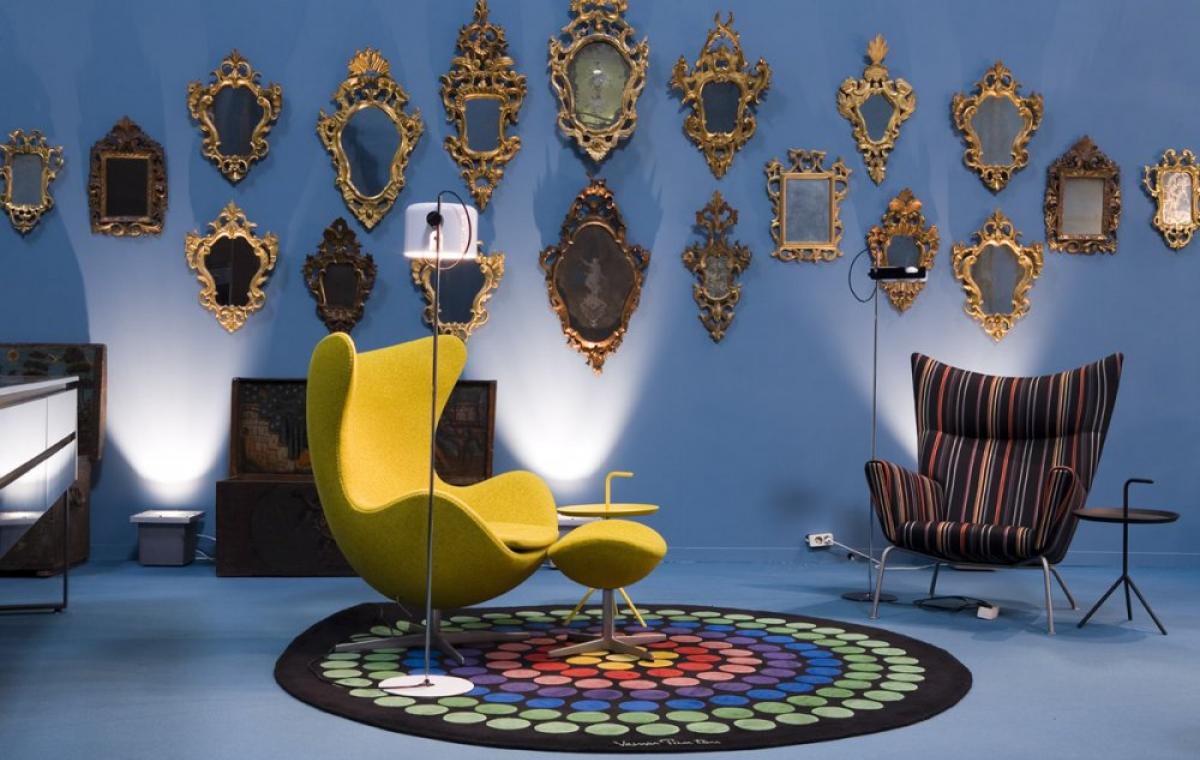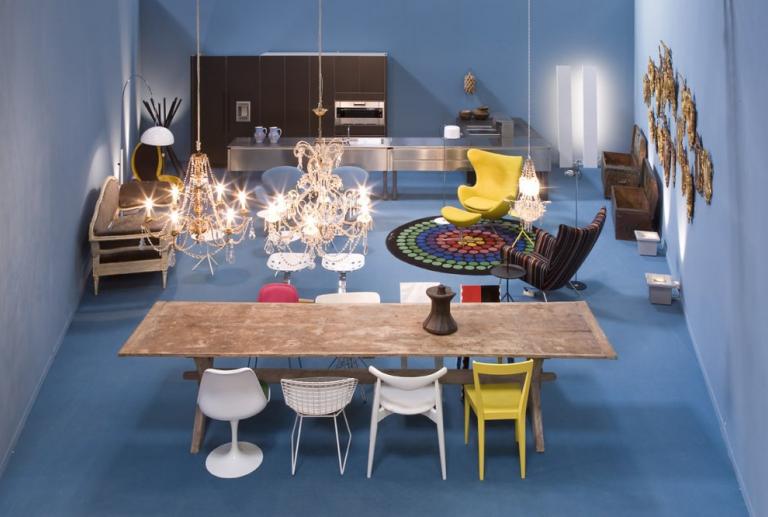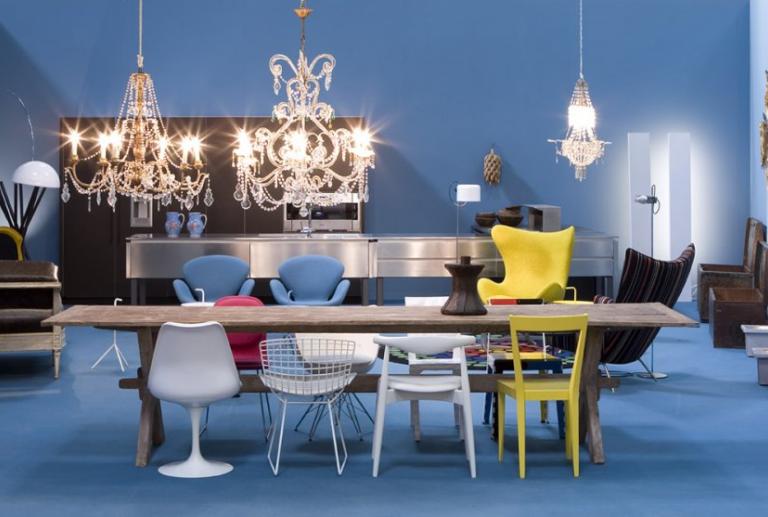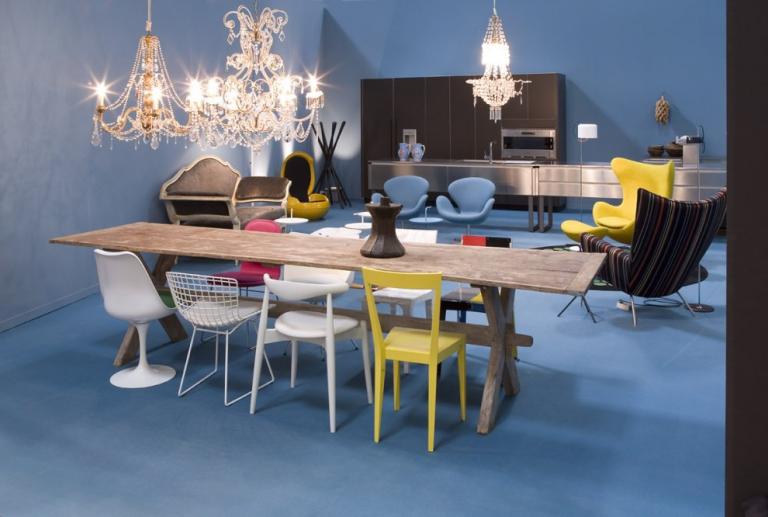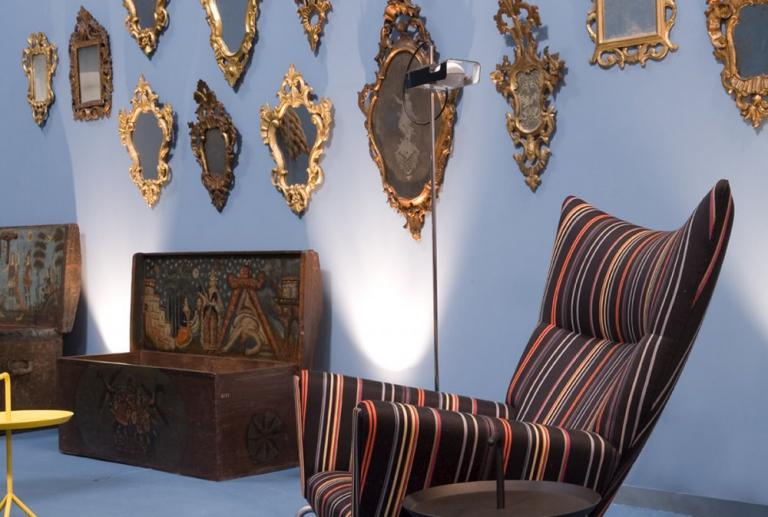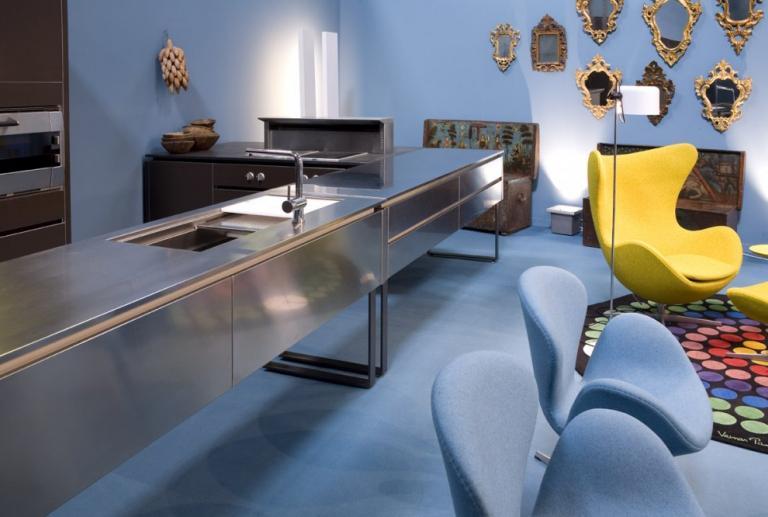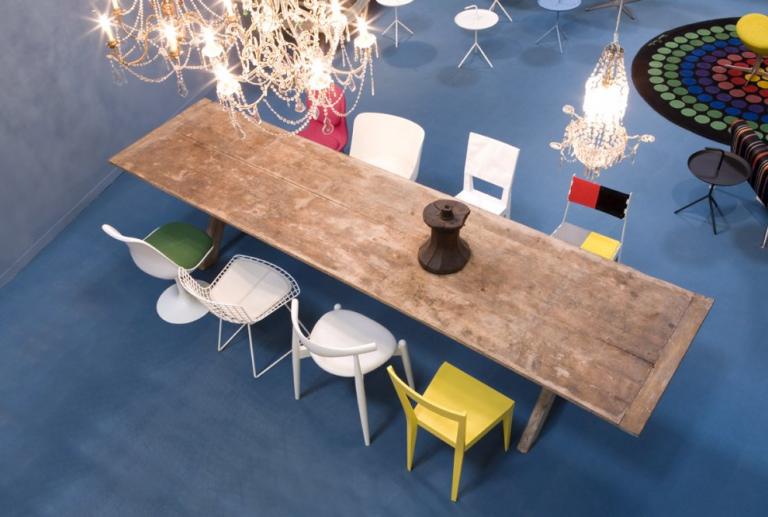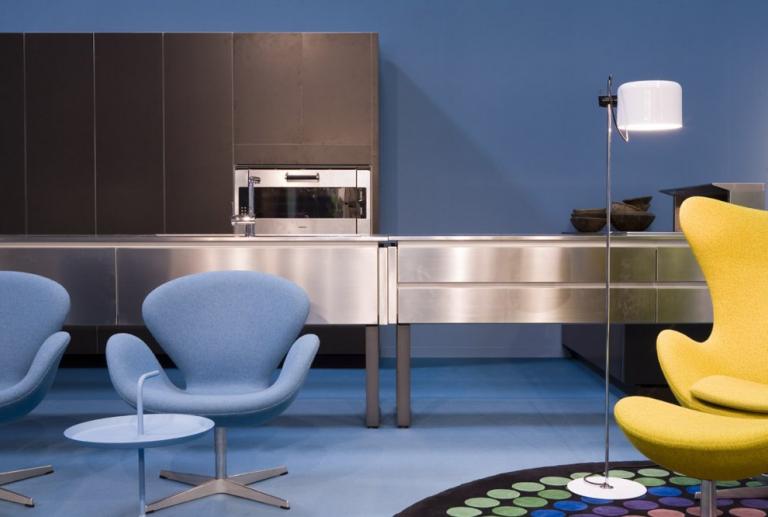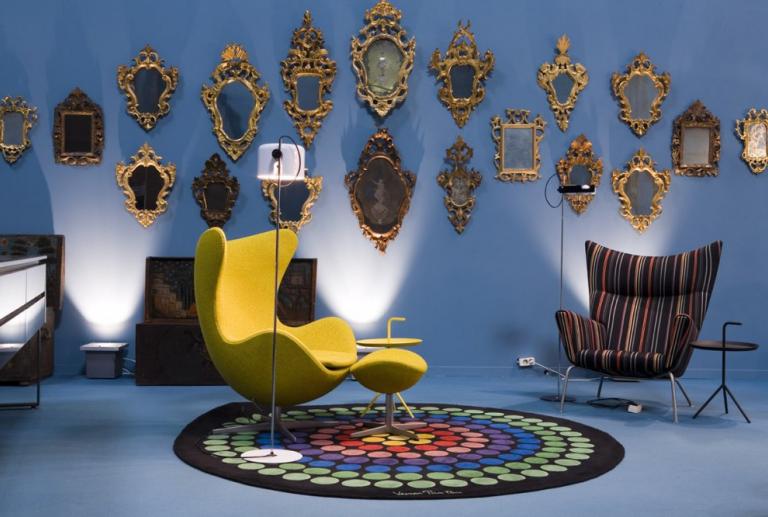Antiquaris Hall 2009 / Barcelona
The merger of the antique and design
A table of the 19th century and eight chairs contemporary colours and various materials. An Italian Bank of the 18th with two armchairs which are a reference in the world of design. Delicate tears lamps and a kitchen with an island, all in stainless steel.
VilaBlanch again present in the Barcelona Antiquaris Hall where shows antiques can live with contemporary design. A multicoloured and space full of contrasts where every piece, regardless of age, has value in itself.
The vilablanch studio was commissioned to realize the new Flashback 2009 space, a project carried out in collaboration with the Barcelona Antiquaris salon which aims to bring antiques to the current homes and demonstrate, in an integration exercise, that antiquarian pieces and contemporary designs can coexist in the same space.
This year the interior designers of the vilablanch studio wanted to support the novelty of the room to incorporate pieces of 20th century furniture, already considered as classics of design. The challenge has been to design a space where furniture from three different epochs can be combined: the antiques, the "classics" of the 20th century and, lastly, the most recent designs.
For the creators of the space, Elina Vilá, Agnès Blanch and Mercè Colomer, the objective was to reflect on the value of the pieces of furniture. Do the designer furniture also transcend in time? A classic of the twentieth century, as can be a piece of Eames, will be an antiquity, or is it already? And the key question: what gives value to a piece?
The criterion of the interior designers of vilablanch has been to select only the pieces that, for them, have that historic value that turns them into referents in the world of furniture. Really unique pieces for its beauty, its functionality or its design.
"Participating in Flashback means facing a new challenge every year. In this edition we have selected pieces that for us have a value that transcends in time. Antiques and pieces of contemporary design can coexist perfectly. "
Elina Vilá, Agnès Blanch, Mercè Colomer, interior designers of the vilablanch studio
The pieces have been chosen according to a single criterion: that all of them have historical value. Antiques, because of their craftsmanship and the patina that grants them the passage of time. The selection of classics of the twentieth century is a tribute to the industrial design and mechanization, which democratized the access to furniture.
And the recent designs ... maybe they will also make history in the near future.
- Antiques: All antiques in the space have "patina" and a singularity that is evident at first sight. The table at the entrance has unusual dimensions for its time and other smaller pieces have been chosen, like a series of golden cornucopias that occupy a whole front of the wall. The two great values of antiquities have been given priority: their craftsmanship and exclusivity.
- The classics of the 20th century: The most characteristic pieces of this period (from 1930 to 1970) are the chairs and armchairs by designers such as Jacobsen, Saarinen, Wegner, who were able to provide a technological or aesthetic innovation in each of their productions. Designs that have gone down in history because of their proven reliability.
- Contemporary designs: The criterion, in this case, has been to choose some of the most innovative pieces of the last decade, from 1999 to the present. They are designs made with the latest advances in technology and materials, with very clean lines, almost minimalist, and that provide the maximum functionality.
They are more than 30 pieces that are combined in a space of 100 square meters that recreates the day zone of a real dwelling. A large kitchen has been arranged around an island, a living room with several rooms, and a large dining room. The space is an explosion of color where each piece is of a different hue (fuchsia, yellow, red ...), all in an environment of walls and blue aged floor.
Among the classics of the 20th century there are several chairs and armchairs of Saarinen, Wegner and Jacobsen; pieces that go from the 1930 to the 1970 and that are combined in different materials and finishes. Contemporary designs are DADA's Hi-Line kitchen, hinged around a large island, and a collection of chairs and seating of reference signatures like Cappellini, Living Divani, Zanotta .... Antiques include a sofa and a French table from the early nineteenth century, as well as a series of large lamps with tears and various objects of decoration from the eighteenth century.
The antique dealers who have collaborated with the vilablanch studio in Flashback 2009: Gallery Mikel Alzueta, Marc Calzada, Curro Severa, The Two Crowns, Palau Antiguitats, Clavell Morgades, Antiguitats Canal, Javier Martí and Moleiro Editores.

The end of the space is reserved for the Hi-line kitchen, by DADA, designed by Ferruccio Laviani, which combines high furniture in chocolate brown color with a large stainless steel island that is more than 5 meters long. To the side of the island are located two polychromed trunks ceded by the antiquarian Curro Servera.
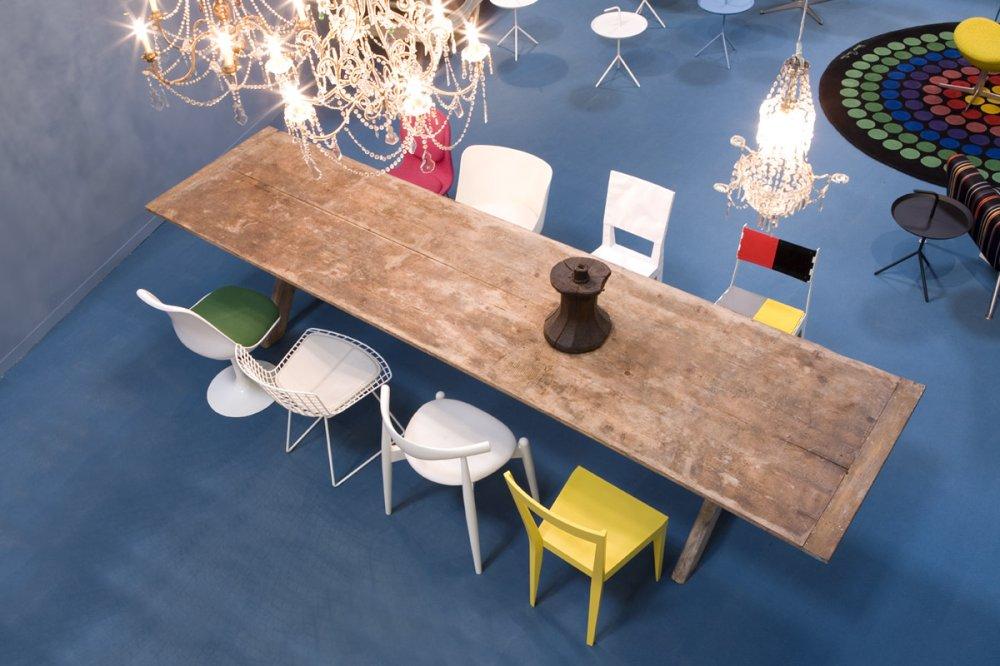
At the entrance to the space has been located the dining room. A large wooden table from 1800, from the gallery of Mikel Alzuela, stands out for its large dimensions. On it, a metallic structure in which have been suspended two great lamps, yielded by Marc Calzada, and a smaller design of Javier Martí Antiquedades.
The great attraction of this area is that the old table is surrounded by 8 chairs, all different. On one side of the table are the four "classic" chairs of the XX: Bertoia chair, from 1952; the Tulip Chair by Saarinen, 1955; Wegner's next year and Ponti's Livia chair, 1937. In front of the newly designed chairs, four innovative models, among which is the new Capellini folding chair, the Stitch, 2008.
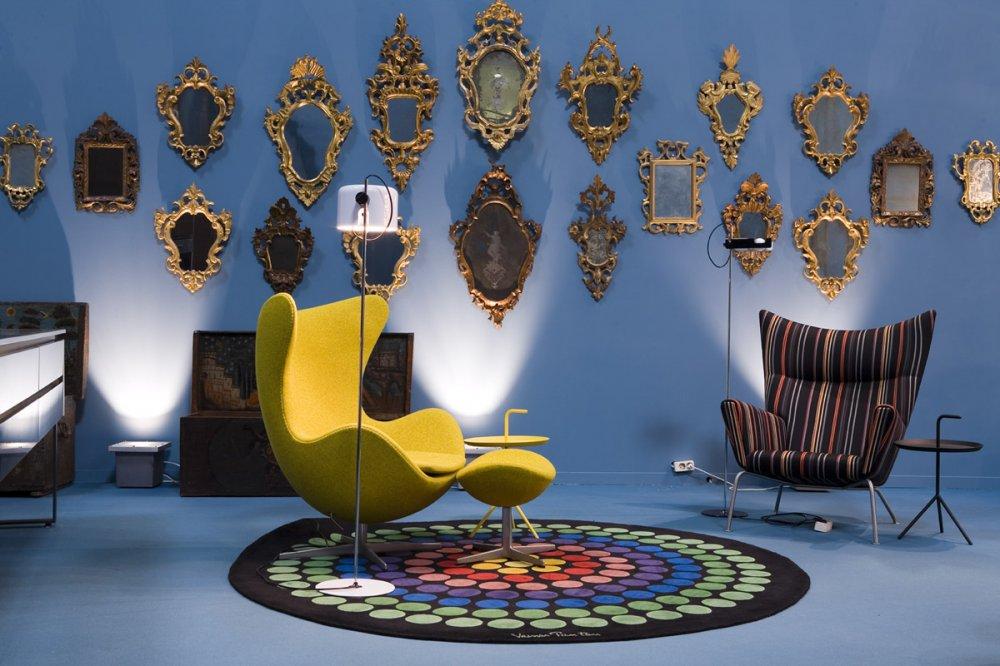
It is a large space divided in small rooms that revolve about three outstanding pieces: an Italian bench of painted wood and velvet upholstery, of 1800, of Mikel Alzueta; a 1970s armchair from the gallery Las Dos Coronas made of yellow plastic of Italian pop design, and the spectacular Egg Chair in felt yellow mustard and the CH445, with striped upholstery, designed by Jacobsen and Wegner.
Around it are created small areas of support with side tables, several lamps of Colombo and a colorful carpet of Verner Panton. In the background wall has been distributed a series of more than 20 golden cornucopias of diverse origin, some of which are pieces of century XVII.
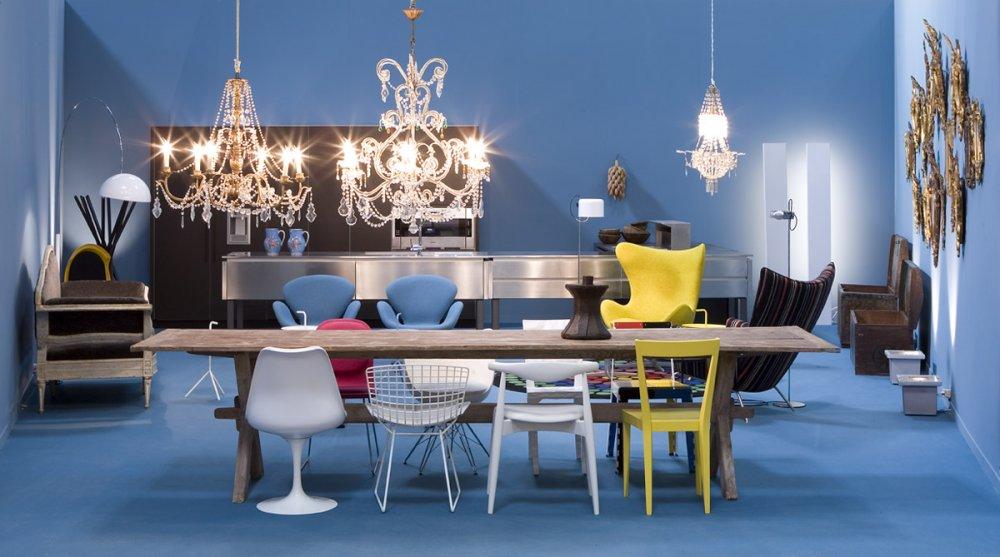
Flashback 09 occupies a plant with a triangular shape of about 100 square meters. The entrance has been closed with panels that draw a cone type access, which welcomes and directs the visitor towards the bottom of the stand.
The space is an explosion of color, each piece is a different color: fuchsia, yellow, green, striped designs ... with a large kitchen in the background in stainless steel and chocolate brown. All the envelope, the floors and walls, are of an aged blue tone.
It has recreated the day zone of a real dwelling. The space is distributed with a large open kitchen, a living room with several rooms and a large dining room.



